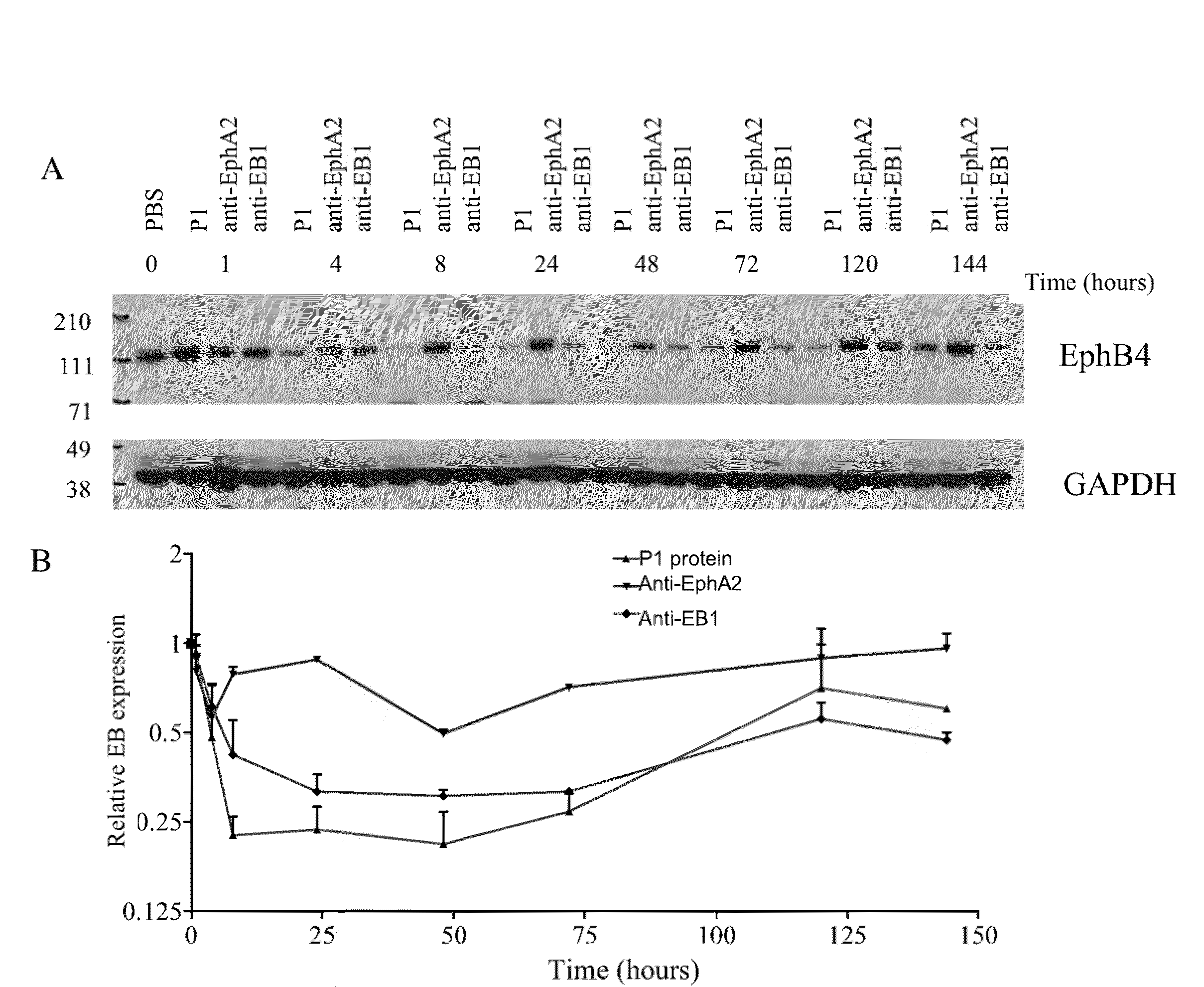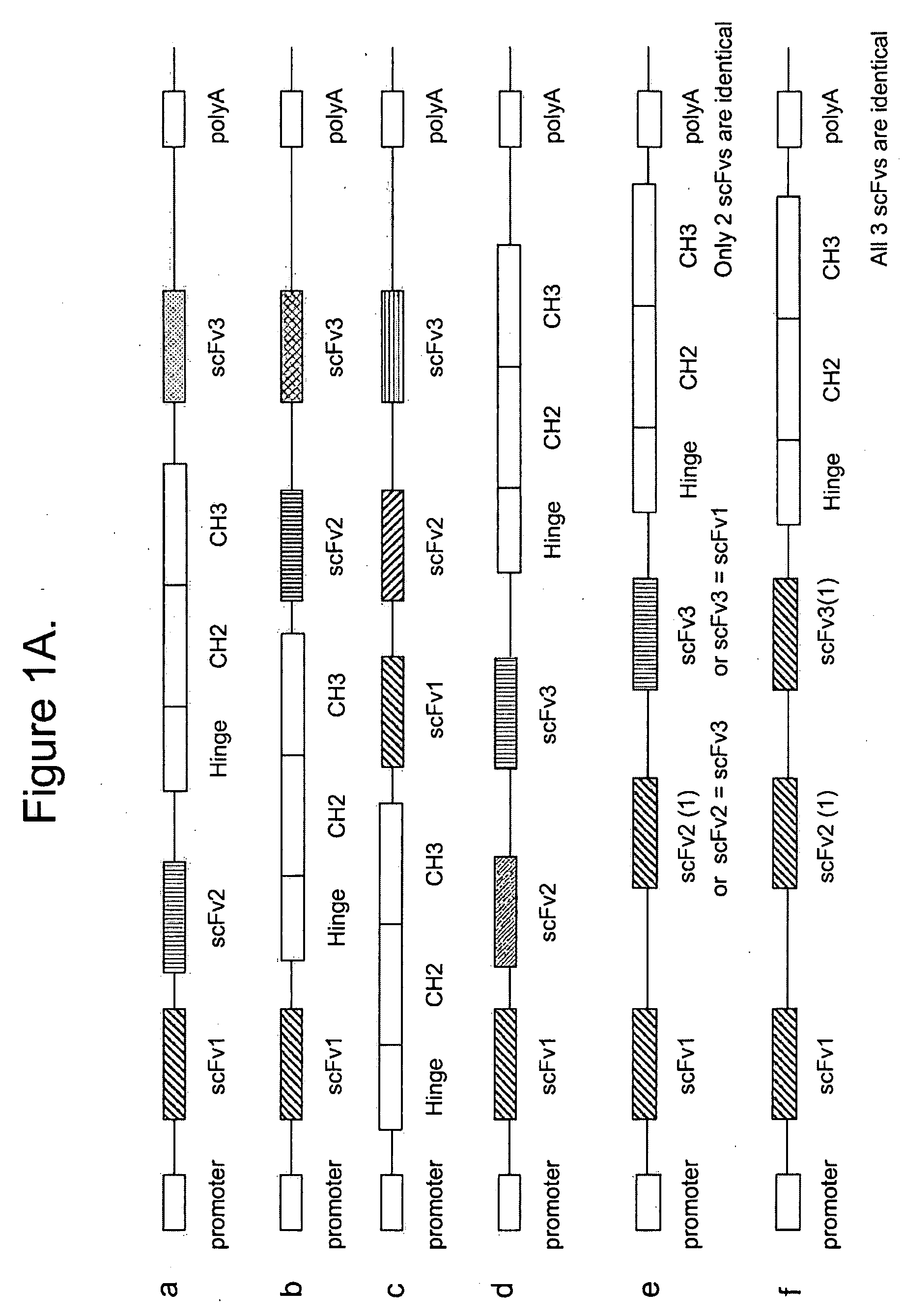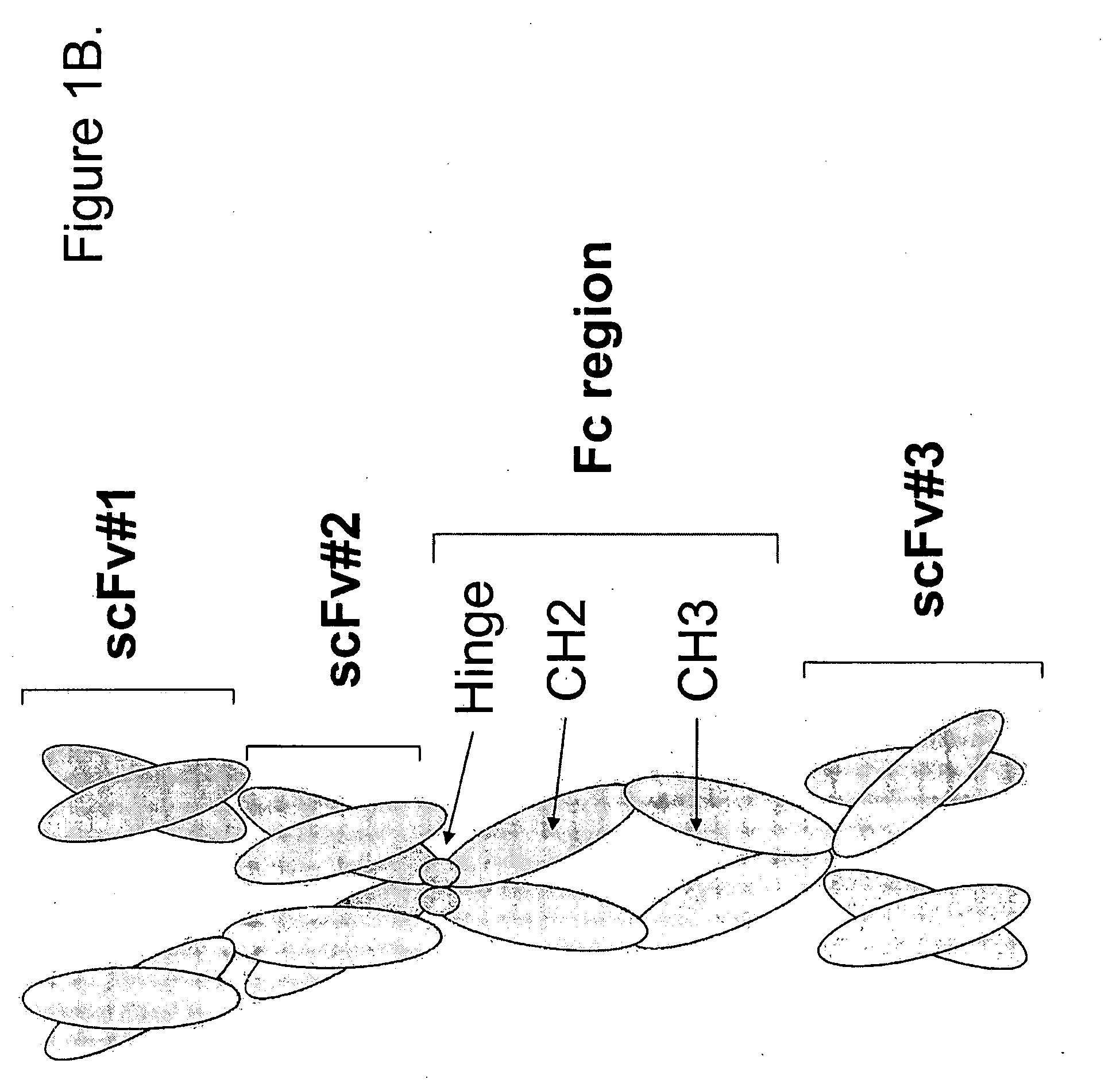Multispecific epitope binding proteins and uses thereof
a technology of epitope binding protein and multi-specific epitope, which is applied in the direction of antibody medical ingredients, immunological disorders, drug compositions, etc., can solve the problems of lack of effector function, lack of stability of antibody-like structures, and lack of functional ability to stimulate an immune response directed against bound antigens, etc., to achieve the effect of boosting the immune respons
- Summary
- Abstract
- Description
- Claims
- Application Information
AI Technical Summary
Benefits of technology
Problems solved by technology
Method used
Image
Examples
example 1
Expression of Proteins Comprising scFv Domains Fused to an Fc Region
[0614]Purpose: To demonstrate high level expression of epitope binding proteins comprising scFv domains linked to Fc regions.
[0615]Methods: The vectors encoding 3F2-522-Fc region and 522-Fc region are used to transfect 293 F cells using the 293 Fectin™ reagent (Invitrogen Cat. 51-0031) and Freestyle™ media (Invitrogen Cat. 12338)+10% fetal bovine serum following the manufacturer's recommendations. The cells are fed on the third day post transfection and the supernatant are harvested on day six. Purification of the antibodies is accomplished was via a protein A column and is followed by dialysis into PBS. The molecules are evaluated in the denatured and non-denatured forms on a protein gel to determine the size and relative purity of the protein.
[0616]Results: Presented in FIG. 7 are the results of a PAGE gel experiment wherein various proteins were subjected to (A) Non-denaturing or (B) denaturing conditions. Lanes ...
example 2
Multiple Epitope Binding Proteins Exhibit Specificity for Target Antigens
[0617]Purpose: To evaluate the ability of the certain proteins to bind target antigens
[0618]Methods: To evaluate binding of 522-Fc region and 3F2-522-Fc an ELISA based format was used. In general, the EIA / RIA ELISA plates (Costar cat. 3690) were coated with 50 μl at 1 μg / ml of the capture protein in PBS (pH 7.2) and incubated at 4° C. overnight. The next day, the plates were washed using an Elx405 auto plate washer programmed for five dispense / aspirate wash steps with 1×PBST (1×PSB, 0.1% Tween 20) separated by three second shaking intervals. The plates were patted dry on a stack of paper towels and blocked with 170 μl of blocking buffer (2% BSA w / v in 1×PBST) for one hour at room temperature. 522-Fc region and 3F2-522-Fc were titrated in another plate with blocking buffer through eight wells starting at 5 ug / ml and 50 ul were added to the blocked wells ELISA plate. After a 1 hour incubation step at room tempera...
example 3
High Level Expression of Epitope Binding Proteins comprising scFv Domains Fused to Fc Regions
[0620]Purpose: To demonstrate high level expression of epitope binding proteins comprising scFv domains fused to Fc regions.
[0621]Methods: The epitope binding protein P1 was constructed by combining three epitope binding proteins, an antibody specific for EphA2 (12G3H11), an scFv specific for an EphA family RTK(EA), and an scFv specific for an EphB family RTK (EB). The resultant structure is disclosed in FIGS. 3C and 3D.
[0622]The vectors encoding 522-Fc region, 3F2-522-Fc region, P1, and 12G3H11 were used to transfect 293F cells using the 293Fectin™ reagent (Invitrogen Cat. 51-0031) and Freestyle™ media (Invitrogen Cat. 12338)+10% fetal bovine serum following the manufacturer's recommendations. The cells were fed on the third day post transfection and the supernatant was harvested on day six. Purification of the epitope binding proteins were via a protein A column and followed by dialysis in...
PUM
| Property | Measurement | Unit |
|---|---|---|
| weight | aaaaa | aaaaa |
Abstract
Description
Claims
Application Information
 Login to View More
Login to View More - R&D
- Intellectual Property
- Life Sciences
- Materials
- Tech Scout
- Unparalleled Data Quality
- Higher Quality Content
- 60% Fewer Hallucinations
Browse by: Latest US Patents, China's latest patents, Technical Efficacy Thesaurus, Application Domain, Technology Topic, Popular Technical Reports.
© 2025 PatSnap. All rights reserved.Legal|Privacy policy|Modern Slavery Act Transparency Statement|Sitemap|About US| Contact US: help@patsnap.com



